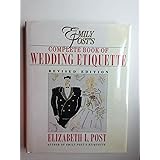The journey from capturing initial moments to commanding premium rates in wedding photography often seems like navigating an entirely different landscape. While an average wedding photographer might charge just under $3,000, according to The Knot’s 2023 statistics, the vast disparity in pricing, particularly between a $3,000 and a $10,000 wedding photographer, can perplex many. This substantial difference is not merely about superior camera gear or a slightly better edit; instead, it encompasses a sophisticated blend of strategic business acumen, brand positioning, and an unparalleled client experience. The following insights delve into the nuanced factors distinguishing high-tier photography services from those in the mid-range.
Understanding the Financial Shift in Wedding Photography
The initial valuation of one’s time significantly dictates the pricing structure for wedding photography services. When first starting out, even a modest fee of just over a thousand dollars can feel like an incredible achievement for new photographers eager to build their portfolio. This early enthusiasm, while vital for growth, often undervalues the immense effort and skill involved in documenting such a significant life event.
Subsequently, as demand for a photographer’s services increases, a natural economic principle comes into play: supply and demand. With a limited number of weekends available for bookings, a photographer who consistently finds their schedule filling up can incrementally raise their rates. This process allows them to transition from a starting price point into the $3,000, and eventually, the $5,000 range, reflecting a growing reputation and increased market desirability.
Building Networks and Industry Connections
Beyond the immediate financial valuation, successful high-end wedding photographers often possess a robust network of industry contacts. Many mid-tier photographers erroneously believe that an extensive network is a prerequisite for high pricing, overlooking the organic growth of connections that naturally accompanies business maturity. Cultivating relationships with wedding planners, venues, and other vendors is an iterative process, strengthening with each successful event and positive interaction.
Consequently, as a photography business expands and consistently delivers exceptional work, opportunities to collaborate with more esteemed industry professionals arise. These connections not only lead to valuable referrals but also integrate the photographer into a community that caters to higher-budget events. Such professional relationships are undeniably a significant driver in elevating a photographer’s earning potential from the $3,000 bracket towards the $10,000 mark.
Navigating the Price Chasm: The Psychology of Value
One of the most critical conceptual leaps for any wedding photographer aiming for premium pricing involves understanding what can be termed the “price chasm.” This refers to the often counterintuitive phenomenon where a higher price can actually signal higher quality to discerning clients. Many photographers fear that raising prices will deter clients, assuming everyone inherently seeks the lowest possible cost.
However, this perspective overlooks a crucial segment of the market that associates a premium price with superior craftsmanship and reliability. When a photographer’s work already demonstrates high quality but their prices remain comparatively low, it can create a “product-price mismatch.” This disparity may inadvertently lead potential clients to question the true value or experience being offered, as a low price can sometimes evoke wariness rather than excitement.
For instance, consider two watches: one priced at a few hundred dollars, featuring a reliable movement and attractive design, and another costing upwards of $80,000 to $90,000. While both tell time accurately and possess inherent beauty, the significantly higher-priced watch signals a luxury brand, unparalleled craftsmanship, and an exclusive experience that transcends mere functionality. Similarly, a $10,000 wedding photographer is not simply offering “better” photos in a quantifiable sense, but rather a holistic luxury experience underpinned by perceived excellence. Successfully bridging this chasm requires not only exceptional photography but also an aligned brand image that justifies and communicates the premium investment.
Beyond the Lens: The Comprehensive Client Experience
Crucially, the distinction between a $3,000 and a $10,000 wedding photographer extends far beyond the technical proficiency of their photography. While excellent photographic skill is a baseline expectation for any professional, especially once moving past the beginner stage, the most substantial growth in value occurs elsewhere. At the higher echelons, “excellent photography” becomes a given; the real differentiator lies in the comprehensive client experience and the overall brand. It is an evolution from being a service provider to becoming a creative director and a purveyor of unique experiences.
When a client invests $10,000, they are not merely purchasing image files; they are buying into a distinct artistic vision, a seamless process, and an inimitable personal connection. This holistic approach means that every interaction, from the initial inquiry to the final delivery of the album, is meticulously crafted to be exceptional. Clients seek a curated journey, desiring a photographer who not only captures moments but also guides them through an artistic process, embodying a specific aesthetic and personality that cannot be easily replicated.
Cultivating a Distinct Photography Brand
A significant factor propelling a $3,000 wedding photographer to a $10,000 one is the development of a robust and recognizable brand. In the earlier stages of a career, photographers are often perceived primarily as service providers, akin to an electrician hired for a specific task. However, as prices ascend, client perception shifts; the photographer transforms into an artist offering a bespoke experience rather than just a commodity service. This transformation is pivotal for capturing the luxury market.
Consider the analogy of a fast-food chain like McDonald’s, where a Big Mac offers a consistently replicated experience, regardless of location. Similarly, a high-end wedding photographer must cultivate a signature style and consistent client journey. This involves creating a recognizable aesthetic, refining a unique workflow, and ensuring that every client receives an experience precisely matching, or even exceeding, the high expectations set by the brand’s premium pricing. This deliberate consistency fosters trust and generates powerful word-of-mouth referrals, essential for sustained growth in the luxury sector.
Strategic Growth Through Intentional Improvement
Achieving the transition from mid-tier to high-end pricing in wedding photography necessitates more than simply accumulating years of experience. While shooting numerous weddings certainly refines technical skills, true advancement stems from intentional improvement. This involves actively seeking out critical feedback, investing in advanced education, and meticulously analyzing one’s own work to identify areas for nuanced refinement. For example, engaging with a mentor or peer to critically review past wedding shoots can unveil subtle opportunities for enhancement that might otherwise go unnoticed.
Furthermore, this deliberate effort translates into learning how to consistently replicate a high standard of work, regardless of external circumstances. An artist, even when working within creative boundaries, strives for consistent excellence that becomes a signature. High-value clients expect a predictable and impeccable outcome, whether the venue is challenging, the weather is adverse, or the timeline is tight. Developing a structured approach to shooting, editing, and client interaction ensures that the aspirational $10,000 wedding photographer can consistently deliver the promised high-quality experience, thereby solidifying their reputation and justifying their premium fees.











